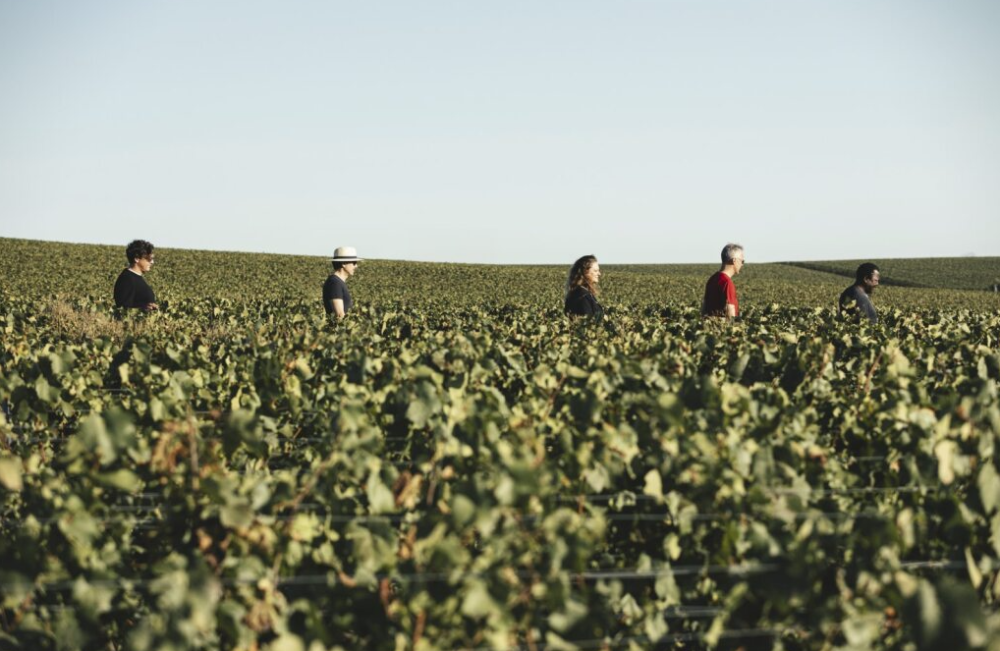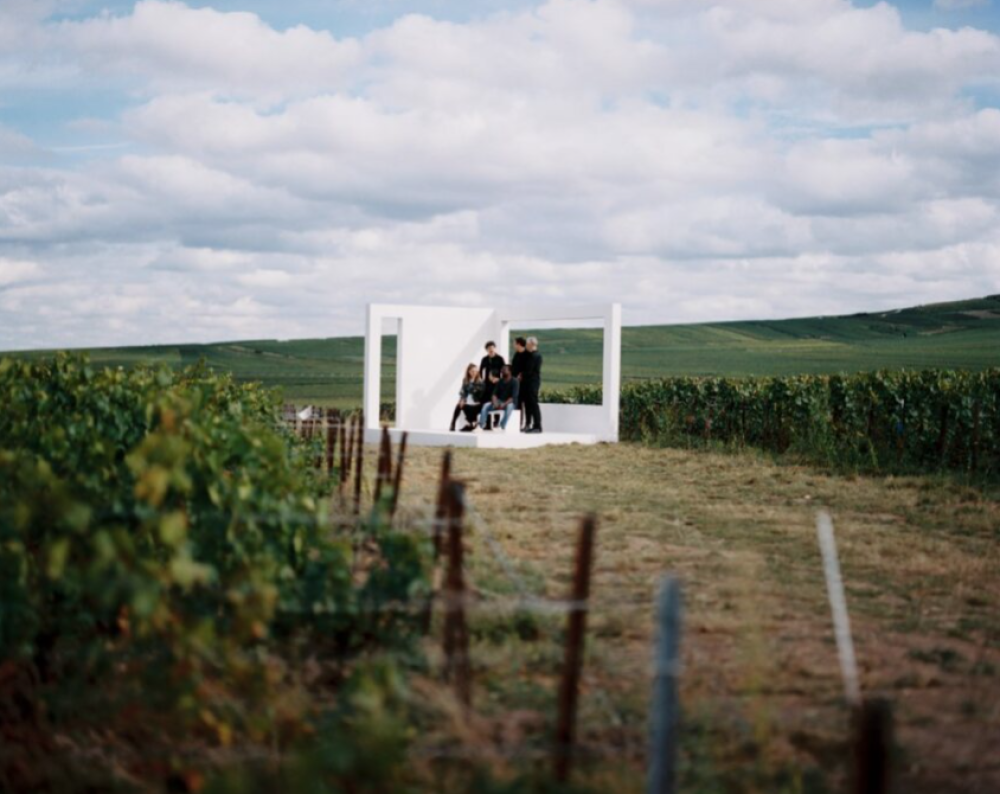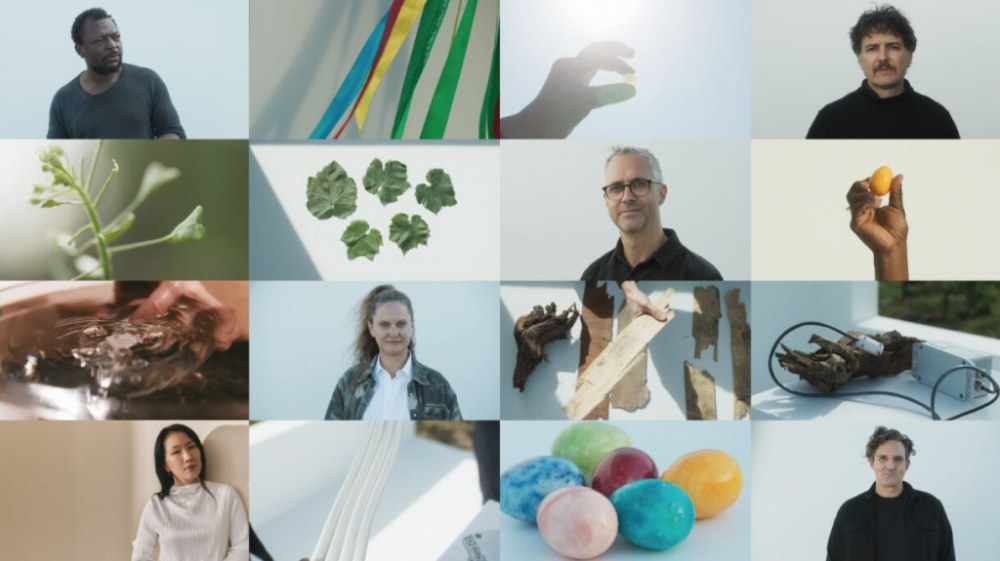Tomoko Sauvage talks about collaboration, nature, and bubbles
May 03, 2024
Each year since 2008, Maison Ruinart has invited a leading contemporary artist to reinterpret its heritage for the Carte Blanche initiative. In a brand first, this year’s ‘Conversations with nature’ commissioned six artists, including Paris-based Japanese musician and artist Tomoko Sauvage. At Art Basel Hong Kong to unveil her debut work, she speaks to Stephenie Gee about the collaboration, nature and bubbles

The first and oldest Champagne house, Ruinart is a long-standing patron of the arts dating as far back as 1896 when the family commissioned Czech artist Alphonse Mucha to create its first advertising poster. Now, each year, via its Carte Blanche programme, the brand welcomes a celebrated artist to unveil their unique interpretation of its history and know-how, with an imposing list of alumni including Liu Bolin, Jeppe Hein and Eva Jospin.
In this year’s Carte Blanche, entitled “Conversations with nature”, Ruinart offers for the first time a collective and diverse vision, driven by six artists from around the world – namely Andrea Bowers, Henrique Oliveira, Marcus Coates, Pascale Marthine Tayou, Thijs Biersteker and Tomoko Sauvage. Spanning mediums and techniques, all share a profound bond with the natural world and an endeavour to illuminate the intricate interplay between humanity and nature from their distinct viewpoints.

The works will be exhibited at art fairs around the world before being brought together from October onwards in an Artists’ Garden at the maison’s headquarters in Reims. Exposed to the elements, they will be viewable all year round, immersed in a rich ecosystem of trees, plants and animal life.
Titled Into the Serpentine Bells, Sauvage’s first exhibition for Ruinart at Art Basel Hong Kong furthers her exploration of the sonic properties of water. In one cylinder of water, you’ll find submerged chalk pieces taken from the Champagne house’s ancient white chalk cellars. In another across from it, a hydrophone picks up the sounds of bubbles manipulating the surface. And beside it, a glass harp dynamically integrates watery physics. The produced singular sound is one that blurs the line between the organic and the electronic.

Tell me about your collaboration with Ruinart.
There are several projects this year. I’m on the Carte Blanche project, which means I’ll do a couple of exhibitions at art fairs like this one in East Asia. But also I have a bigger, more permanent project, which will be revealed in France, in the Champagne region, in October. It’s a permanent sculpture piece for a garden.

Do you see parallels between the values of Ruinart and your own?
Yes, actually. Surprisingly, I found quite a lot of connections between my practice and Ruinart’s history and their site and just the general wine culture. As you might have seen in my exhibition, I transformed a glass harp instrument, which is a very old and quite simple instrument that uses wine glasses by means of friction so they resonate. I motorised a kind of wine glass, but it’s actually more like a small crystal bowl that rotates. I also integrated water and physics into this instrument to create a fluid timbre, a very special timbre. And this reminds me of the wine drinking gesture of rotating the wine glass.
In another piece, I used lots of bubbles made by this chalk, directly from Ruinart’s wine cellar. It’s built on a very deep chalk quarry, which is 20 million years of accumulation of marine microorganisms. And I used the porosity of this chalk to produce microbubbles in water. Then I amplify the sound with the hydrophones and the microphones. So this kind of marine life, which comes from this deep geological time, I dissolve in the water and make it resonate. I found it very surprising and also a satisfying result from using the elements of Ruinart.

Where did your passion for bubbles come from?
My passion for bubbles is a long story. It’s maybe 15 years that I’ve been playing with bubbles, starting with porous terracotta. It’s a ceramic and very similar to the chalk material. I even named it “fortune biscuit”, like a fortune cookie, because the bubbles from this porous terracotta sounded different each time in a very unexpected way. And it was revealing kind of a new soundscape every time. It felt like it was determining a direction so that’s why I called it “fortune biscuit”. That’s how I started to experiment with bubbles. But then I also played with shells, using the cavity to make bubbles. Each shell is like an instrument, a small underwater instrument. Inspired by this performance practice, I also made an installation piece, Buloklok, which is this bubble clock. It’s quite simple for me. I really just love to watch how bubbles are made and how they go out from one thing and float in the water.

Ruinart invited five other artists for a collective Carte Blanche. I understand you prefer to work as
a soloist, so what was that experience like?
I come from the music field. I’m a musician, composer and performer, so to collaborate with other artists, I’ve done it, in a kind of deep way. This time, it’s a bit different, but I think it’s interesting to create some kind of resonance between artists. And I believe that the geography of France – especially the maison, its cellar, its vineyard, the environment – was a key part of this collaboration because it’s really from there that we can take inspiration.

As an artist, what role does nature and the environment play in your work? What does sustainability mean to you?
It’s important for everyone, I believe. There’s not one solution, but somehow we have to make an effort to minimise the negative effects of human activity on nature. But for me, as an artist, that’s not really the objective. It’s not the direct objective because art or music existed before and my practice itself dialogues with nature, of course, but in a very specific way. I have a very specific practice, a way of listening to the sound, for example, and listening to the sound of objects and materials, such as water. But I also use air to vibrate. All this is connected to the bodies, our bodies. And our bodies are made of water as well. I’m aware of this circulatory nature of water. It’s inside our bodies. It’s everywhere, because in the air there’s water as well. So in terms of thinking about nature and the relationship with nature, this is the basis. The objective is there, yes, but it’s more like the practice itself produces that thought about nature.

Did you encounter any challenges with this collaboration?
Timing-wise, it was very challenging. I didn’t have a lot of time but it went well, given the timeframe. I had good support. I also live in Paris, so it’s very close to Reims so I could visit easily. That was important.
Tell me about your creative process. How did you begin? Where did you find your inspiration?
I think it was really helpful that I visited Ruinart’s site in Reims to see their history, to feel the geographical factors and to meet the people involved with the research of wine, but also of bubbles. There I also met a scientist from Reims who specialises in Champagne bubbles, and we had a very meaningful conversation. These things I experienced in Reims were all very important.

Did you learn anything interesting from the scientist?
Yes, very much. He’s a scientist but for me, he also has a quite artistic way of doing research. I personally always thought that bubbles and the watery elements that I use in my practice have something to do with the analogy between microcosm and macrocosm. And it was very surprising, super interesting to see that the scientist himself thinks in the same way when he’s researching the micro bubbles of Champagne.
He really sees the connection with the bigger things – for example, the bubbles in the sea or in the universe, the formation of bubbles, the formation of clouds and planetary elements. He thinks these are all connected, and that was a really surprising discovery. And inspiring.
How would you describe your relationship with Ruinart? Are you a fan?
Yes, of course. It’s simply gorgeous. Ruinart’s wine is gorgeous but also I’m really interested in the history behind the Champagne and the wine culture.
Also see: Van Cleef & Arpels spreads springtime joy through Landmark installation





























